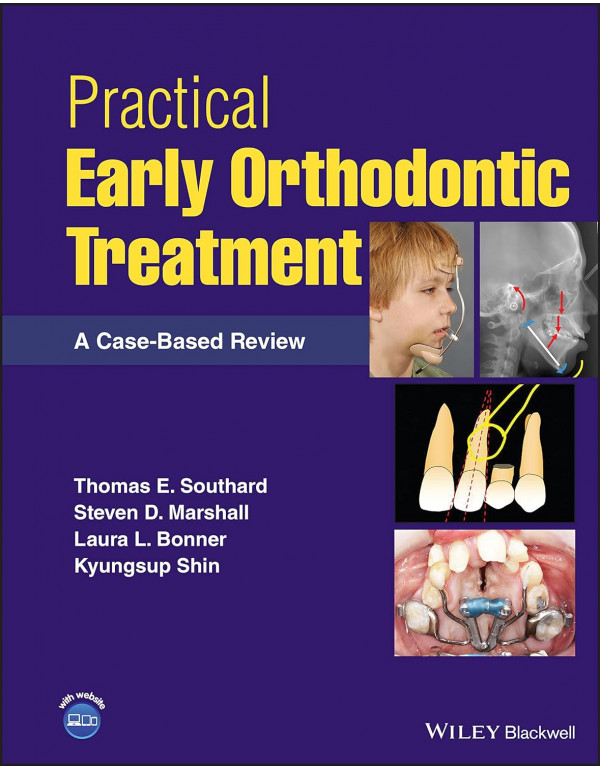Overview of Practical Early Orthodontic Treatment: A
Case-Based Review
Authors: Thomas E. Southard, Kyungsup Shin, Steven D. Marshall, Laura L. Bonner
Edition: First
Key Themes:
Early intervention strategies for childhood malocclusions (misaligned teeth)
and dentofacial deformities (jaw discrepancies)
Utilizing case studies to illustrate diagnosis, treatment planning, and
outcomes in early orthodontics
Optimizing treatment decisions based on facial growth and development patterns
Features:
Case-based approach for practical application of early orthodontic principles
Covers a wide range of early orthodontic problems, including crowding, eruption
issues, missing teeth, and jaw discrepancies
Offers treatment solutions with high-quality images for clear visualization
Question-and-answer format to encourage critical thinking and gauge
understanding
Target Audience:
Orthodontists
Pediatric dentists
General dentists with an interest in orthodontics
Dental residents and students focused on orthodontics
Strengths:
Comprehensive overview of early orthodontic principles
In-depth discussion on facial skeleton, airway, and dentition development in
children
Practical guidance on managing various early orthodontic problems through case
presentations
User-friendly format with high-quality visuals and a question-and-answer
approach
Chapter Headlines (Examples):
General Principles of Early Orthodontic Treatment
Early Treatment for Crowding
Management of Eruption Sequency Problems
Interceptive Treatment for Missing Succedaneous Teeth
Early Intervention for Anteroposterior Discrepancies
Early Treatment of Vertical and Transverse Problems
Closing Paragraph:
Practical Early Orthodontic Treatment: A Case-Based Review serves as a valuable
resource for dental professionals who manage malocclusions and dentofacial
deformities in children. This book utilizes a case-based approach to provide
practical knowledge on early intervention strategies, treatment planning, and
expected outcomes. By understanding the principles of growth and development,
practitioners can make informed decisions to optimize orthodontic care for
their young patients.
